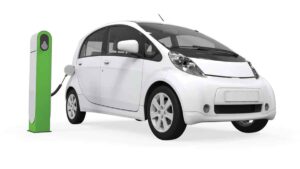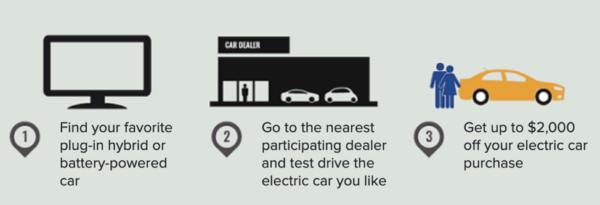
One of the biggest contributors to an individual’s carbon footprint is transportation — specifically, gas-powered vehicles. Your mileage will vary, so to speak, but according to the EPA, a typical passenger car emits about 4.6 metric tons of carbon dioxide per year, producing about 404 grams of CO2 per mile. In New York State alone — according to the state’s greenhouse gas inventory — road transportation fuel combustion accounts for 17% of the state’s greenhouse gas emissions.

The good news is that there are increasingly practical alternatives to gasoline-powered vehicles that not only reduce carbon emissions, but are actually less expensive to operate in general. As of this writing in May 2022, the national average price for gas is $4.48 a gallon and while it won’t stay that high forever (we’ve been down this road before), the cost of gas is a not inconsequential financial hit for many individuals and families even at the best of times. An alternative to a gasoline-powered car is an electric vehicle (EV), which run on batteries rather than gas. EVs can be 50–70% less expensive to drive per mile than gas-powered vehicles and generate far fewer greenhouse gas emissions.
The argument has been made that, since electricity itself is produced using fossil fuels, won’t an increase in EVs on the road increase the demand for electricity and thus the greenhouse gas emissions produced by power plants? Not really, no: at least in New York State, electricity is generated in part using “clean” sources, so the greenhouse gas emission problem isn’t simply being shifted elsewhere. And as the grid gradually comes to include more renewable energy options, this issue will become less of a problem in the future. (The New York Climate Leadership and Community Protection Act has ambitious GHG reduction goals, requiring reductions in statewide GHG emissions of 40% by 2030 and 85% by 2050.)

Another concern vis-à-vis EVs is a practical one: are there enough charging stations to accommodate more EVs on the road? There is good news on this front as well. Charge NY is an initiative born of a collaboration among the New York State Energy Research and Development Authority (NYSERDA), the New York Power Authority, and New York State Department of Environmental Conservation that uses a combination of education, research, consumer outreach, and financial support for the installation of charging stations across New York to—quite simply—get more EVs on the road. One of their missions is to accommodate one million plug-in electric vehicles by 2025. If you are in or around Saratoga Springs, you can find a list of the city’s charging locations here.
At the same time, the New York Power Authority is dedicating $250 million to its EVolve NY program, the goal of which is “making electric vehicles easy to own in New York State and decarbonizing the state’s transportation sector.” Amongst their initiatives is the installation of “fast charging” stations, and they plan to have at least 800 installed by the end of 2025. As they say, “Our fast chargers will be located along major state highway corridors, usually within five minutes of the roadway exit, and will be compatible for all types of current EV models.” (In a nutshell, “fast charging” uses DC power rather than AC and can charge most passenger EVs up to 80% in as fast as 15 minutes, but, again, your mileage will vary.)
Charge NY is also offering a variety of financial incentives to promote the purchasing of EVs, including rebates and tax credits—although these are subject to change at both the federal and state level. At the time of this writing, the Drive Clean Rebate offers money off the price of an EV at the time of purchase, and EV buyers can also take advantage of a federal tax credit for the purchase of a new EV. The Thruway Authority’s Green Discount Plan offers qualified EV owners a special EZ Pass “green tag” that discounts Thruway tolls. Again, these are subject to change, so be sure to click through the links before you decide to take advantage of them. Here is a link for Federal rebates.
Confused about EV options?
NYSERDA has a variety of calculators and comparison tools available for you to choose an EV based on your own driving habits and lifestyle.
While there are many financial incentives to switching to electric vehicles, we shouldn’t lose sight of the fact that EVs dramatically reduce greenhouse gas emissions, helping us reduce our overall carbon footprint. Driving cleaner vehicles can also help reduce air pollution, which, according to the Union of Concerned Scientists, “is single-handedly responsible for up to 30,000 premature deaths each year.” It is essentially a win-win-win scenario, for our budgets, for our health, and for the planet.
Interested in a hands-on experience? Come to our EV car & e-bike show at Skidmore College on Saturday, June 18, 2022.





